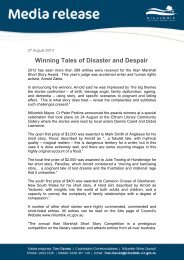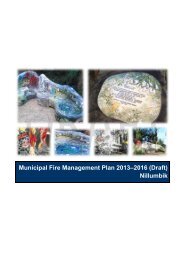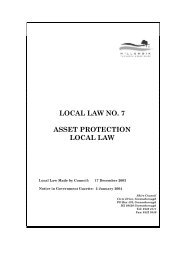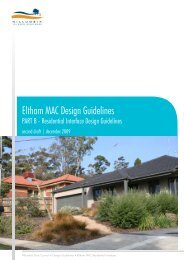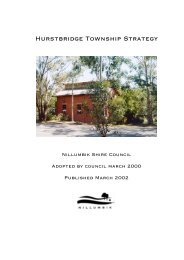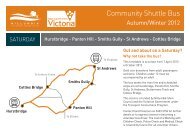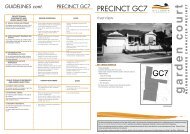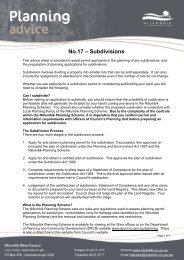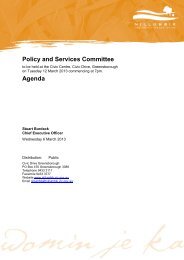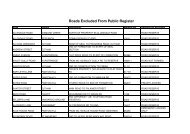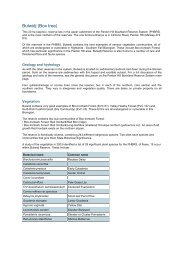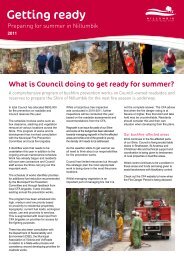26 March 2013 - Nillumbik Shire Council
26 March 2013 - Nillumbik Shire Council
26 March 2013 - Nillumbik Shire Council
You also want an ePaper? Increase the reach of your titles
YUMPU automatically turns print PDFs into web optimized ePapers that Google loves.
OCM.029/13 Submission to Metropolitan Planning Strategy 2012 Discussion PaperAttachment 1 The idea that the Central City is the core location of the ‘knowledge economy’ fails toacknowledge other knowledge economy hubs and the decision of some hi-technology,international firms to locate outside the CBD, such as MYOB and Hewlett Packard.Fostering this idea and encouraging an expanded Central City will also certainly create avery clear divide between the ‘choice-rich’ inner suburbs and ‘choice-poor’ outer areas.A knowledge economy requires highly educated workers, many of whom do choose toreside in the inner city (and have been influential in the gentrification of inner Melbourne).But as highlighted earlier, <strong>Nillumbik</strong> has a large number of highly educated and skilledresidents, who choose to live in <strong>Nillumbik</strong> for its green wedge values and most of whomtravel outside the <strong>Shire</strong> for work. If the Strategy has the effect of consolidating theknowledge economy in the Central City, huge transport and infrastructure improvementswill be needed to link workers with their jobs.Idea 2 - Nationally significant employment and innovation clusters The Strategy suggests reinforcing three to six existing and potentially nationallysignificant clusters of employment and then broadening their uses. If this suggestionaims to create new Principal Activity Centres, <strong>Council</strong> is concerned about the future ofexisting centres where local governments have invested huge amounts of money andtime. Major and Principal Activity Centres are still relatively young, however some areshowing signs of maturity and great success due to investment. The Strategy shouldconcentrate on these existing centres, whether there are more than six and even if theycannot be considered as nationally important, but rather of regional importance.Idea 3 – Unlocking capacity in established suburbs <strong>Council</strong> has been working hard on providing greater certainty for residents anddevelopers on where infill housing is encouraged and discouraged. For example,<strong>Council</strong>’s Activity Centre Structure Plans identify sufficient areas where higher densitiesare encouraged. Diamond Creek 2020 Activity Centre Structure Plan aims to provide300 new medium density dwellings by 2031. Eltham MAC Structure Plan aims toaccommodate up to 200 additional medium density dwellings by 2024. <strong>Council</strong> has alsoundertaken comprehensive community consultation on the Structure Plans to clearlycommunicate and gain acceptance of the plans and policies that encourage higherdensities and more development in Activity Centres.<strong>Council</strong> has instigated and progressed numerous projects that comprehensivelydocument the <strong>Shire</strong>’s urban and landscape elements, qualities, opportunities andconstraints to determine preferred areas for development. This work has informed theextent of planning controls which both limit development (e.g. Heritage and Significant39



